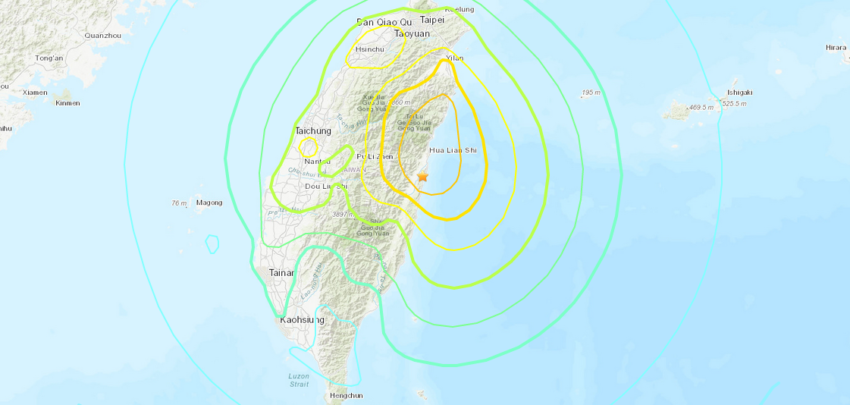| Listen to our audio presentation: History of Russia |
On April 2, 2024, a significant 7.4 magnitude earthquake hit the eastern coast of Taiwan, causing widespread alarm and triggering tsunami warnings across the region, including southern Japan and the Philippines. The United States Geological Survey (USGS) reported that the quake occurred near the boundary between the Eurasia and Philippine Sea plates, characterized by reverse faulting. This seismic event was followed by a 6.5 magnitude aftershock, adding to the region’s distress.
The earthquake’s origin was attributed to tectonic shifts within the Eurasia plate, with a focal mechanism pointing to a reverse fault with a northeast-southwest orientation. This area is known for its complex tectonic interactions, often resulting in significant seismic activity. Historically, this region has experienced several large earthquakes, including the devastating 7.7 magnitude Chi-Chi earthquake in 1999, which resulted in over 2,000 deaths and significant economic loss.
The recent earthquake’s impact extended beyond Taiwan, with the Philippines issuing evacuation orders for coastal areas due to tsunami threats. Tsunami warnings were also issued for southern Japan, particularly affecting the Miyako island, the Yaeyama region, and Okinawa’s main island, although these were later downgraded to advisories.
In Taiwan, the earthquake led to power and internet outages, with reports of infrastructure disruptions such as suspended high-speed rail services and educational activities in Hualien County. Flight cancellations to and from Okinawa highlighted the broader regional impact of this natural disaster.
Added Value: Historical Context and Tectonic Complexity
The region where the April 2 earthquake occurred is a tectonically complex zone, where the Eurasian and Philippine Sea plates interact. This area has a history of significant seismic activity, with the 1999 Chi-Chi earthquake being one of the most notable events, causing extensive damage and loss of life. The tectonic setting involves the transition from eastward subduction of the Eurasia plate to westward subduction of the Philippine Sea plate, creating conditions conducive to frequent and powerful seismic events.
Other Major Quakes in Taiwan:
- September 21, 1999: Magnitude 7.7 (Chi-Chi earthquake) – This devastating earthquake caused extensive damage, leading to at least 2,297 fatalities and significant economic losses.
- April 2, 2024: Magnitude 7.4 – A major earthquake on the eastern coast, causing regional tsunami warnings and notable infrastructural damage.
- April 21, 1935: Magnitude 7.1 (Hsinchu-Taichung earthquake) – Resulted in over 3,200 deaths and widespread destruction, one of Taiwan’s deadliest earthquakes.
- February 13, 1906: Magnitude 7.1 – Struck the northern part of the island, causing severe damage and loss of life.
- 1920: Magnitude 8.2 – Occurred east of Taiwan, potentially associated with the subduction zone between the Philippine Sea and Eurasian plates, one of the largest seismic events in the region.

